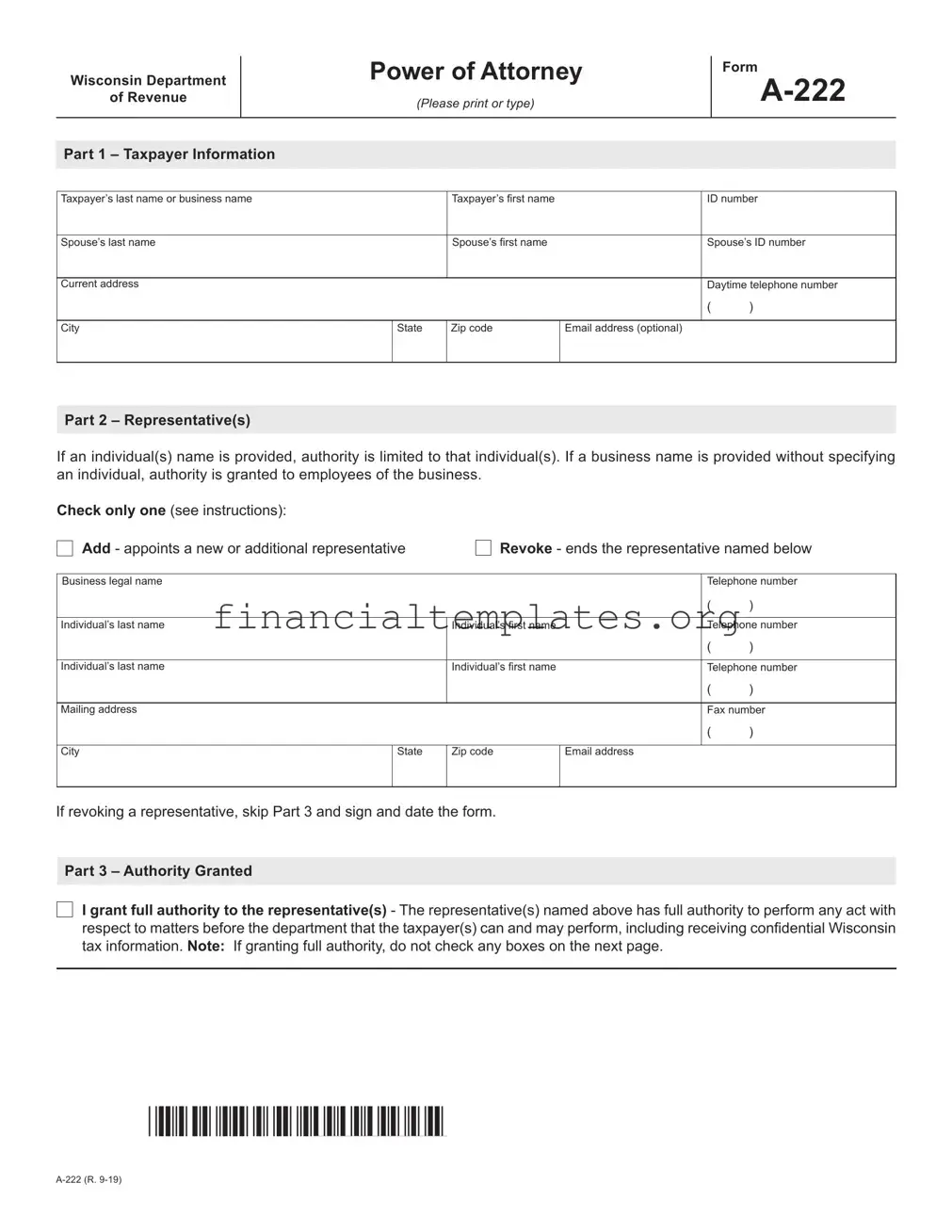The Tax POA Form A-222 is similar to the IRS Form 2848, "Power of Attorney and Declaration of Representative." Both forms are used to authorize an individual to represent the signer before the IRS or state tax authorities. They allow the representative to receive confidential tax information and to act on behalf of the signer in tax matters. However, Form 2848 is specifically for use with the IRS, while Form A-222 may be used with state-level tax entities.
Similar to the Health Care Power of Attorney, the Tax POA form provides a designated individual with the authority to make decisions on another's behalf. While the Health Care POA focuses on medical decisions, the Tax POA centers on tax matters, showcasing the adaptability of POA documents to various fields for representing interests and making decisions.
The Tax POA Form A-222 shares similarities with the General Power of Attorney form. Both empower an agent to act on behalf of the principal, though the General Power of Attorney typically covers a broader range of activities. The Tax POA is more specific, limiting the agent's powers to tax-related issues.
Comparable to the Durable Power of Attorney, the Tax POA allows individuals to appoint someone to handle their affairs. The Durable Power of Attorney remains effective even if the principal becomes incapacitated, which may or may not be the case with the Tax POA, depending on how it is structured. Each serves to safeguard the principal's interests in various scenarios.
Similar to the Limited Power of Attorney, the Tax POA focuses on a specific aspect of the principal's affairs – in this case, tax matters. Unlike broader POA forms that grant wide-ranging powers, both of these documents limit the agent's authority to designated areas or tasks.
Like the Advance Directive, the Tax POA form takes effect under specific conditions and is a proactive measure for managing one's affairs. However, while Advance Directives concern healthcare decisions and end-of-life care, the Tax POA pertains to financial and tax-related decisions.
The Business Power of Attorney is another document related to the Tax POA Form A-222, as it allows a business owner to appoint someone to handle business-related matters, potentially including tax issues. The Tax POA can be seen as a specialized form of Business POA that deals strictly with tax-related concerns.
Similarly, the Guardianship document appoints an individual to make decisions on behalf of another, often a minor or someone unable to make decisions for themselves. While Guardianship covers a broad range of decisions, including health and financial matters, the Tax POA is narrowly focused on tax issues.
The Estate Power of Attorney bears resemblance to the Tax POA Form A-222 as it authorizes someone to manage the principal's estate, which can include dealing with tax matters among other responsibilities. It is another example of how POA forms can be tailored to suit specific needs within the scope of estate management.
Lastly, the Financial Power of Attorney and the Tax POA Form A-222 are alike in that they both grant someone authority to handle financial aspects of the principal's life. While the Financial Power of Attorney covers a wide range of financial dealings, the Tax POA is specifically aimed at addressing tax-related tasks and responsibilities.








 Income or Franchise Taxes
Income or Franchise Taxes 
 Sales and Use Taxes
Sales and Use Taxes
 Excise Taxes
Excise Taxes
 Property Taxes
Property Taxes
 Employer Withholding Taxes
Employer Withholding Taxes


 Nontax Debt
Nontax Debt
